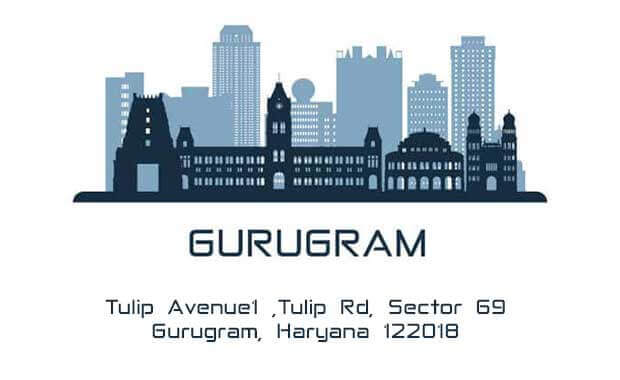What is a WAMP stack?
WAMP stands for Windows, Apache, MySQL, and PHP. A WAMP stack is a collection of four distinct software development tools that programmers use to create websites and online apps. The abbreviation WAMP stands for Windows, Apache, MySQL, and PHP, which are all web servers and programming languages. All four of these technologies are open source, which means that they are all maintained by the community and that anyone is free to use them. To generate, host, and maintain web content, developers employ WAMP stacks. Many of the websites we use every day are run by this well-liked service.
Why is a WAMP stack important?
Web developers choose a WAMP stack to build web applications for the following reasons.
- Cost: Since all WAMP technologies are open source, anyone who develops software or owns a business can use them for free. The operating system, web server, database, and programming language can all be downloaded for free instead of paying for parts of a proprietary stack. As a result, developing web applications becomes less expensive.
- Efficiency: Thorough testing of various frameworks, modules, libraries, and tools is necessary before establishing a new web development stack. A WAMP stack, on the other hand, is a tried-and-true web development option. Prioritizing and accelerating application development allow web developers to concentrate on the end product rather than the process of construction.
- Maintenance: Software professionals from all over the world modify, comment on, and evaluate the publicly available source codes to help build the WAMP stack of technologies. They regularly maintain and update the sources to ensure that the technologies are secure and relevant.
- Support: WAMP stacks, for example, are widely used open-source technologies that are backed by a substantial global IT community. As a result, WAMP stack users can discover knowledge on public IT forums much faster. The open-source community has developed tested plugins that web developers can use or refer to example scripts for.
- Flexibility: Web developers benefit from the dependability and flexibility of a WAMP stack. Although each layer's software components are listed in the WAMP design, developers are free to swap them out as they see fit. For instance, they may base the stack on a different operating system than Linux.
What is a WAMP stack used for?
For server-side or backend programming, a WAMP stack is employed. Software that operates in a fashion that is hidden from end users is referred to as a backend application. Backend software includes the following:
- Data processing software
- Database components
- Business logic in code
- API for communicating with other applications
The frontend application is the webpage that appears in your browser. Your browser contacts the backend program to retrieve the necessary data whenever you interact with the website, for instance, by clicking on a button. A WAMP stack is used by developers to produce both static and dynamic online content.
Static webpages
Every user receives the same static webpage information from the web server. The address on a company's website is an example of static content. Static webpages are created by web developers using HTML and CSS coding languages, and then they are saved as files in the web server application.
Dynamic webpages
Information on dynamic websites varies based on whether the user is accessing the website or a web application. Dynamic content is, for instance, a website message that adapts to your location. The web server processes business logic or retrieves data from a database to deliver dynamic websites.
What is the WAMP architecture?
A software stack is a collection of organized technologies, programming languages, libraries, and tools used to create, maintain, and run applications. The stack is made up of software elements, including visual presentation, database, networking, and security, that assist the application in various ways.
Similarly, the WAMP architecture is made up of four software programs that collaborate invisibly to produce a functional web application. It describes the interactions between each of these web development tools on a computer server. These are the layers of the WAMP architecture.
Windows
Windows is an operating system created by Microsoft that you can install and configure to meet different application requirements. Windows sits at the first level of the WAMP stack and supports other components on the upper layers.
Apache
The second layer in the WAMP stack is the open-source web server Apache. The HTTP internet protocol, which transfers website information in plain text, is used by the Apache module to communicate information with a browser and store website files. For instance, the Apache HTTP server performs the following when a browser requests a webpage:
- Receives the request
- Processes the request and finds the required page file
- Sends the relevant information back to the browser
MySQL
The third layer of the WAMP stack is the open-source relational database management system MySQL. MySQL is used by the WAMP paradigm to manage, store, and query data in relational databases. Developers might save application data like sales, inventory, and customer details. The web server makes a query to the MySQL database when a user requests information. The term "query" describes specialized SQL language instructions for changing data in a relational database.
PHP
The fourth and last layer of the WAMP stack is PHP, which stands for PHP: Hypertext Preprocessor. It is a scripting language that enables dynamic operations to run on websites. Information that is always changing in software is part of a dynamic process. PHP is a computer language that web developers incorporate into HTML to display real-time or updated information on websites. They make use of PHP so that the operating system, database, and web server can all work together to execute requests from browsers.
For frontend development, such as developing the layout of webpages, web developers adopt HTML. As visitors load a webpage, they use PHP to decide how specific components will behave. For instance, HTML is used by web developers to create the graphical layout of an online product catalog. The most recent product pricing is then retrieved from the backend server using PHP code.
How does a WAMP stack work?
Web applications respond to queries from web browsers using the WAMP stack. PHP is used for communication between the Linux operating system's MySQL database and Apache web server. The following is what the WAMP stack does when you open a webpage in a browser.
- Receives requests: The inbound request from the browser is handled by the Apache web server. When a request to load a static file is made, the Apache server immediately responds with the requested information. The Apache server sends the request to the PHP component if it is for dynamic content. The PHP component locates and loads the necessary PHP file in order to handle the request.
- Processes requests: The PHP file includes PHP functions, which are computer programs used to create dynamic content. The PHP component executes PHP functions, such as unit conversion or sales chart creation. There's the possibility that some PHP functions will require data from the database. In these circumstances, the PHP code uses the stored data from the database to process the function.
- Returns responses: PHP delivers the HTML-formatted results of the operations to the web server. It adds fresh data to the MySQL database simultaneously. The user's browser receives the dynamic HTML results from the Apache HTTP server.






